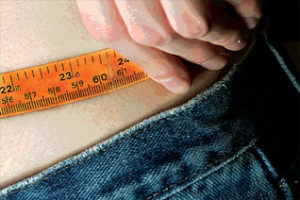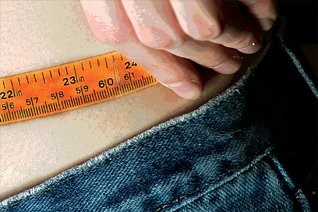Meuren Martins
Contributor
Many people tend to overlook their waist when it comes to figuring out whether they’re packing on the pounds and instead reach for the scale, but according to doctors across Canada, waist size can not only predict whether you’re gaining weight, but whether you’re at risk of heart-related problems.
According to the Heart and Stroke Foundation, “Fat stored around your middle can put you at risk for high blood pressure, high blood cholesterol, type-2 diabetes, heart disease and stroke.”
Adam Douglas, strength and conditioning coach for York University, explains that studies in the past have proven a bigger waist size comes from the fat surrounding the organs. There are two kinds of fat that can surround the waist, Douglas explained, subcutaneous fat and visceral fat.
Subcutaneous fat is located on the outside of the organs, just beneath the skin, as opposed to visceral fat, which is located deeper within the body. Visceral fat is particularly hard to measure, but it is also a crucial measure of whether one has the potential to develop heath disease.

“Studies have shown that a lot of problems with waist size is visceral fat. It’s not necessarily the fat on the outside of your body, it’s the fat that surrounds the organs,” said Douglas. “You get a lot of hard fat on people; that is what relates to a lot of problems with heart disease. Waist size is also a general fitness indicator of how healthy you are overall.”
Is waist size something university students have to worry about? Douglas thinks students should always be aware. “Studies are showing that [a higher waist size] is becoming more common and that’s really unfortunate. There is a study that came out which shows that the generations behind us, so the future university students, are the largest we’ve ever seen.”
Andrew Abe, a fourth-year York psychology student, also sees waist size as something university students should look out for.
“I definitely think it’s something university students need to worry about. Exercise and diet really reflects your waist size and especially your heart and because people are too busy with work, they do not get adequate exercise and diet.”
Paul Baichoo, a third-year criminology major at York, agrees sedentary lifestyles are growing more common at York. “I think that when we’re younger we get into more bad habits, so I think a lot of young people say that it’s something to worry about when you’re older. So if you’re eating more and not exercising, then it’s going to be harder to break that habit when you’re old.”
If you’re a male who has a waist size larger than 94 centimeters, or a female who is larger than 80 centimeters, then you are at a higher risk for getting weight-related health problems.
According to Douglas, however, it’s never too late to start working on getting yourself back into good health. He suggests finding a trainer to help you get in the gym and encourage you to complete a vigorous workout.
But, if you cannot afford a personal trainer, Douglas also says working out by yourself or with a friend works just fine as well.
“If you are working out by yourself, the easiest thing you can do is just start slow and build into it. Get active, get moving. Whether it’s signing up for classes with a friend, or something you like – dance classes, Muay Thai classes – find something you enjoy doing, and stick to it and then you can progressively get into harder work outs.”
Moreover, Douglas also gives some sage advice to those who feel they are genetically prone to be overweight.
“Even if you are cursed with bad genes, you can still do work to help prevent the overall decline of health. Fortunately for university students, they aren’t necessarily as bad as a 40-year-old, so there’s is still that time to make changes. They’ll have time to make these changes. The best thing they can do is to get active and get involved,” said Douglas.
Measuring your waist size is more important than you think


